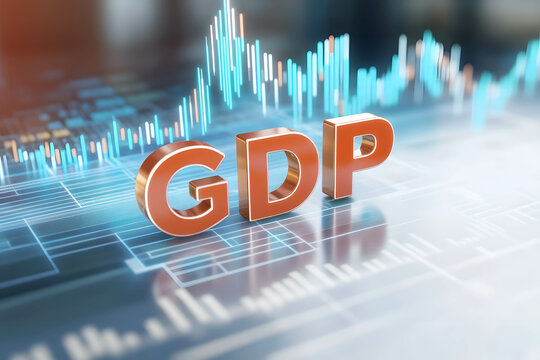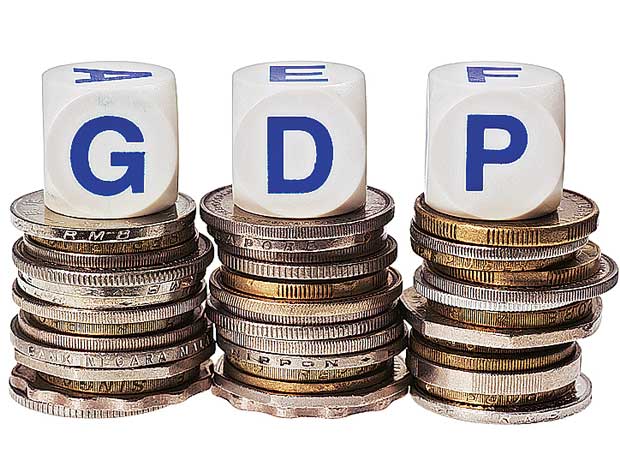One of the most important economic indicators used to measure a country’s economic performance is GDP (Gross Domestic Product). GDP used to assess economic performance because it provides an overview of the total value of goods and services produced by a country within a certain period. GDP also covers all economic sectors, from agriculture and industry to services.
In practice, GDP becomes the main benchmark in assessing economic growth, designing fiscal and monetary policies, and comparing economic performance between countries.
High GDP indicates a strong economy because it reflects large production of goods and services, high per capita income, abundant employment, and the government’s ability to provide public services.
Conversely, low GDP indicates a weak economy with limited production, low income, high unemployment, and limited resources for development and welfare.
Therefore, GDP is an important tool for measuring economic health and guiding economic policy decisions because it can provide nearly accurate data on a country’s growth.
Discover more : How Indonesia Is Responding to Trump’s Tariff Threats and Global Economic Uncertainty
What is Gross Domestic Product (GDP)?

Gross Domestic Product (GDP) is the total value of all final goods and services produced by a country within a specific time period, usually one year. Academically, GDP used as the main indicator to measure a country’s economic performance because it reflects the level of production and overall economic activity.
GDP can be calculated using three approaches: production, income, and expenditure.
- Production Approach: Calculates the value added from all production sectors in the economy, which is the difference between output value and intermediate inputs.
- Income Approach: Totals all income received by production factors, such as wages, rent, interest, and profits.
- Expenditure Approach: Totals all spending on final goods and services, including consumption, investment, government spending, and net exports (exports minus imports).
GDP then divided into two main categories: nominal GDP and real GDP. Nominal GDP measures the value of goods and services at current market prices, while real GDP accounts for price changes and measures production value at constant prices.
In conclusion, nominal GDP reflects a country’s production value based on prevailing prices at that time, so it can be affected by inflation. Meanwhile, real GDP shows the actual production value by eliminating the effect of price changes, making it more accurate in describing real economic growth.
How to Calculate GDP and Its Interpretation

Before discussing further how to calculate and interpret GDP figures, it is important to first understand the main components that make up this indicator.
By knowing its components, we can more easily assess how each sector in the economy contributes to the total national output value.
Components of GDP
In general, GDP consists of four main components representing the expenditure sectors in the economy, namely consumption, investment, government spending, and net exports.
First, household consumption (C) includes all household expenditures on final goods and services, such as food, clothing, transportation, and healthcare. This component often makes up the largest portion of GDP because household consumption is routine and widespread.
Second, investment (I) refers to private sector and company spending on capital goods such as machinery, buildings, and infrastructure that support future production. Inventory changes are also included in this category, as storing production goods for the future reflects economic activity.
Third, government expenditure (G) includes all forms of government spending on goods and services, including public facilities development, civil servant wages, and public service procurement. Note that transfer payments such as subsidies and social assistance are not included in this component, because they not represent the exchange of goods or services.
Fourth, net exports (X – M) is the difference between the value of exports of goods and services to other countries and imports from abroad. If exports exceed imports, this component contributes positively to GDP. Conversely, if imports exceed exports, the value is negative because part of household spending not used to purchase domestic production.
GDP Calculation Formula

The most commonly used method to calculate Gross Domestic Product (GDP) is the expenditure approach, which adds up all final spending from various economic sectors in a country over a certain period. The basic formula is:
GDP = C + I + G + (X – M)
where:
C = household consumption,
I = private sector investment,
G = government spending,
X = value of exports of goods and services, and
M = value of imports of goods and services.
For example, imagine a country has the following data in one year: consumption of Rp 5,000 trillion, investment of Rp 2,000 trillion, government spending of Rp 1,500 trillion, exports worth Rp 1,000 trillion, and imports worth Rp 800 trillion. Then, the country’s GDP calculated by adding all these components as follows:
GDP = 5,000 + 2,000 + 1,500 + (1,000 – 800) = Rp 8,700 trillion
This calculation reflects the total market value of all final goods and services produced domestically within one year. This value can be used to assess economic growth, compare performance across periods, or as a basis for forming national economic policy.
Here is a visualization of each component’s contribution to GDP using a horizontal bar chart. This graphic clarifies that imports (M) reduce total GDP value, while other components such as consumption and investment contribute positively.
Discover More : Risk Management Strategies for Small and Medium Enterprises
The Impact of GDP on Business Decisions

Gross Domestic Product is not only a macroeconomic indicator for governments and financial institutions, but also has a direct impact on the business world. For business players, GDP reflects consumer purchasing power conditions, industry sector growth trends, and potential risks or market opportunities.
For example, when GDP grows consistently, it can be interpreted that the economy is in expansionary condition, meaning people tend have higher incomes and increase consumption. In this situation, many companies will be more confident to expand their businesses, open new branches, hire more workers, or launch new products.
Conversely, when GDP shows contraction or slow growth, it becomes a warning signal for business players to re-evaluate their strategies. A decline in GDP can imply reduced market demand, increased price competition, and hindered access to funding.
Ultimately, properly analyzed GDP data is not only a benchmark for the national economy but can also be a compass for business decision-makers in responding to market dynamics more intelligently and precisely.
Therefore, understanding GDP movements and its components can help companies develop more adaptive and targeted business planning.
Arghajata Consulting is here to help your company interpret economic data, including GDP, to formulate more effective business strategies. With accurate insights and in-depth analysis, we can help you leverage current economic conditions to achieve success. Contact us now for strategic consultation that will optimize your business potential.

















